
James McCulloch
@jamesimcc.bsky.social
PhD student in genomics at the Wellcome Sanger Institute/University of Cambridge. National recorder for springtails. Evolutionary biology, entomology, taxonomy, natural history...
https://www.sanger.ac.uk/person/mcculloch-james/
https://www.sanger.ac.uk/person/mcculloch-james/
366 days ago I started my PhD at the @sangerinstitute.bsky.social. No better time to publish my profile on the Sanger website ⬇️
www.sanger.ac.uk/person/mccul...
I tend to have my taxonomic hat on when posting here, but there is a bigger picture!
www.sanger.ac.uk/person/mccul...
I tend to have my taxonomic hat on when posting here, but there is a bigger picture!


October 2, 2025 at 12:01 PM
366 days ago I started my PhD at the @sangerinstitute.bsky.social. No better time to publish my profile on the Sanger website ⬇️
www.sanger.ac.uk/person/mccul...
I tend to have my taxonomic hat on when posting here, but there is a bigger picture!
www.sanger.ac.uk/person/mccul...
I tend to have my taxonomic hat on when posting here, but there is a bigger picture!
Finally, this is the tiny Sminthurides bifidus. These are synanthropic aquatic springtails found on the edge of glasshouse water features and fish tanks. The dorsal black marking is quite variable.
The males are smaller and have antennal clasping organs to grasp the females in courtship! 🧵6/7
The males are smaller and have antennal clasping organs to grasp the females in courtship! 🧵6/7

August 24, 2025 at 2:40 PM
Finally, this is the tiny Sminthurides bifidus. These are synanthropic aquatic springtails found on the edge of glasshouse water features and fish tanks. The dorsal black marking is quite variable.
The males are smaller and have antennal clasping organs to grasp the females in courtship! 🧵6/7
The males are smaller and have antennal clasping organs to grasp the females in courtship! 🧵6/7
This is Seira domestica, a slender springtail almost never found outdoors (in the UK, at least). Lepidocyrtus have similar iridescent scales but have 2 teeth on the mucro (furca apex), not 1.
When assembled, this will be the first reference-quality genome from the subfamily Seirinae! 🧵5/7
When assembled, this will be the first reference-quality genome from the subfamily Seirinae! 🧵5/7


August 24, 2025 at 2:40 PM
This is Seira domestica, a slender springtail almost never found outdoors (in the UK, at least). Lepidocyrtus have similar iridescent scales but have 2 teeth on the mucro (furca apex), not 1.
When assembled, this will be the first reference-quality genome from the subfamily Seirinae! 🧵5/7
When assembled, this will be the first reference-quality genome from the subfamily Seirinae! 🧵5/7
This is Sminthurinus igniceps, a relative but less distinctive. It can be told from dark S. aureus by having a head paler than the body, and from S. domesticus by having mostly orangey antennae.
This species is also synanthropic, but seemingly moving out more into the wider countryside. 🧵4/7
This species is also synanthropic, but seemingly moving out more into the wider countryside. 🧵4/7

August 24, 2025 at 2:40 PM
This is Sminthurinus igniceps, a relative but less distinctive. It can be told from dark S. aureus by having a head paler than the body, and from S. domesticus by having mostly orangey antennae.
This species is also synanthropic, but seemingly moving out more into the wider countryside. 🧵4/7
This species is also synanthropic, but seemingly moving out more into the wider countryside. 🧵4/7
Despite its spots which seem to glow among the woodchips, S. bimaculatus is very similar to S. trinotatus. You need to look for a pair of hairs called subapical ventral setae on the dens, part of the springing organ (furca) that gives springtails their name. This arrow shows where they'd be! 🧵3/7

August 24, 2025 at 2:40 PM
Despite its spots which seem to glow among the woodchips, S. bimaculatus is very similar to S. trinotatus. You need to look for a pair of hairs called subapical ventral setae on the dens, part of the springing organ (furca) that gives springtails their name. This arrow shows where they'd be! 🧵3/7
This beautiful species, Sminthurinus bimaculatus, has been the British springtail I've most wanted to see. As with the other 3 spp., it's primarily synanthropic, meaning it's associated with human habitats like this flowerpot. 🧵2/7


August 24, 2025 at 2:40 PM
This beautiful species, Sminthurinus bimaculatus, has been the British springtail I've most wanted to see. As with the other 3 spp., it's primarily synanthropic, meaning it's associated with human habitats like this flowerpot. 🧵2/7
I've reached 100 British springtail species! This was helped by a recent glasshouse sampling trip, where I added these 4 species.
3 are now in the pipeline to have reference-quality genomes sequenced for the first time, by the @sangerinstitute.bsky.social. More info in the thread below! 🧵1/7
3 are now in the pipeline to have reference-quality genomes sequenced for the first time, by the @sangerinstitute.bsky.social. More info in the thread below! 🧵1/7




August 24, 2025 at 2:40 PM
I've reached 100 British springtail species! This was helped by a recent glasshouse sampling trip, where I added these 4 species.
3 are now in the pipeline to have reference-quality genomes sequenced for the first time, by the @sangerinstitute.bsky.social. More info in the thread below! 🧵1/7
3 are now in the pipeline to have reference-quality genomes sequenced for the first time, by the @sangerinstitute.bsky.social. More info in the thread below! 🧵1/7
While it appears similar to true E. imitabilis, described from a single Chinese specimen, the pattern of E. petri is unique. The chaetotaxy - the arrangement of hairs (setae) on different parts of the body - is also unique.
Click the Alt text on these images for explanations of what they depict!
Click the Alt text on these images for explanations of what they depict!
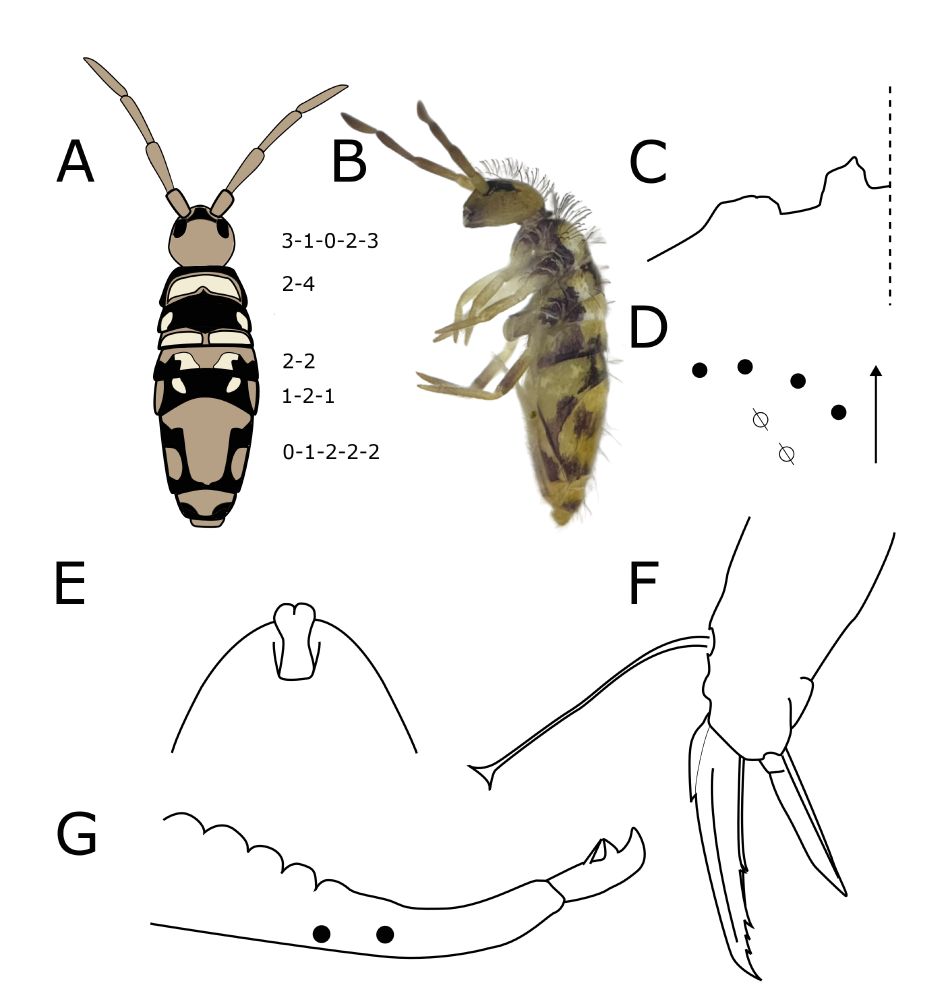
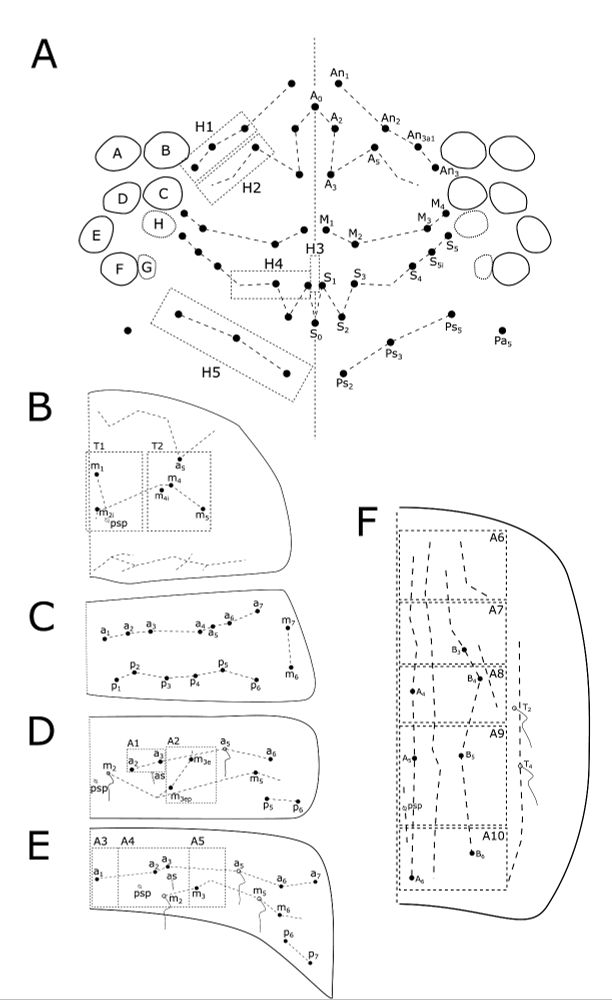
July 16, 2025 at 2:07 PM
While it appears similar to true E. imitabilis, described from a single Chinese specimen, the pattern of E. petri is unique. The chaetotaxy - the arrangement of hairs (setae) on different parts of the body - is also unique.
Click the Alt text on these images for explanations of what they depict!
Click the Alt text on these images for explanations of what they depict!
Formerly known as Entomobrya nr imitabilis, this morphospecies was first spotted in 2015. Since then it has appeared across the whole length of the British Isles - the type specimens were found on an Edinburgh gravestone. Where it has come from and how it has spread so quickly is a mystery...

July 16, 2025 at 2:07 PM
Formerly known as Entomobrya nr imitabilis, this morphospecies was first spotted in 2015. Since then it has appeared across the whole length of the British Isles - the type specimens were found on an Edinburgh gravestone. Where it has come from and how it has spread so quickly is a mystery...
Good news! >6000 springtail records have been imported from iRecord and are now available on the NBN Atlas: species.nbnatlas.org/species/NBNS...
Massive thanks to @duerden.bsky.social for his investment in verifying iRecord records.
Keep them coming!
Massive thanks to @duerden.bsky.social for his investment in verifying iRecord records.
Keep them coming!
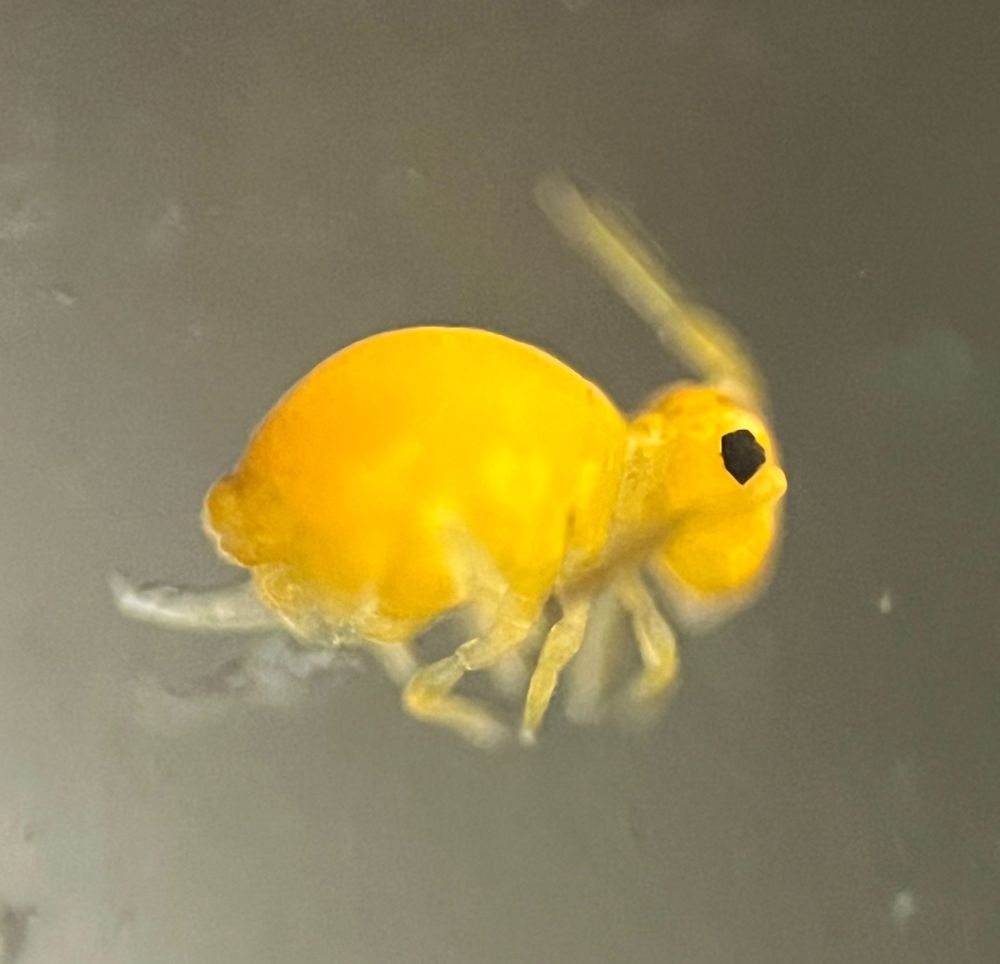
April 21, 2025 at 9:51 AM
Good news! >6000 springtail records have been imported from iRecord and are now available on the NBN Atlas: species.nbnatlas.org/species/NBNS...
Massive thanks to @duerden.bsky.social for his investment in verifying iRecord records.
Keep them coming!
Massive thanks to @duerden.bsky.social for his investment in verifying iRecord records.
Keep them coming!
New to Britain! These springtails are Dicyrtomina signata, a European species that's never previously been seen in the UK. I found these while out and about in Wanstead Park, London (with @josscarr.bsky.social, @nmaybury4.bsky.social).
One to look out for!
One to look out for!
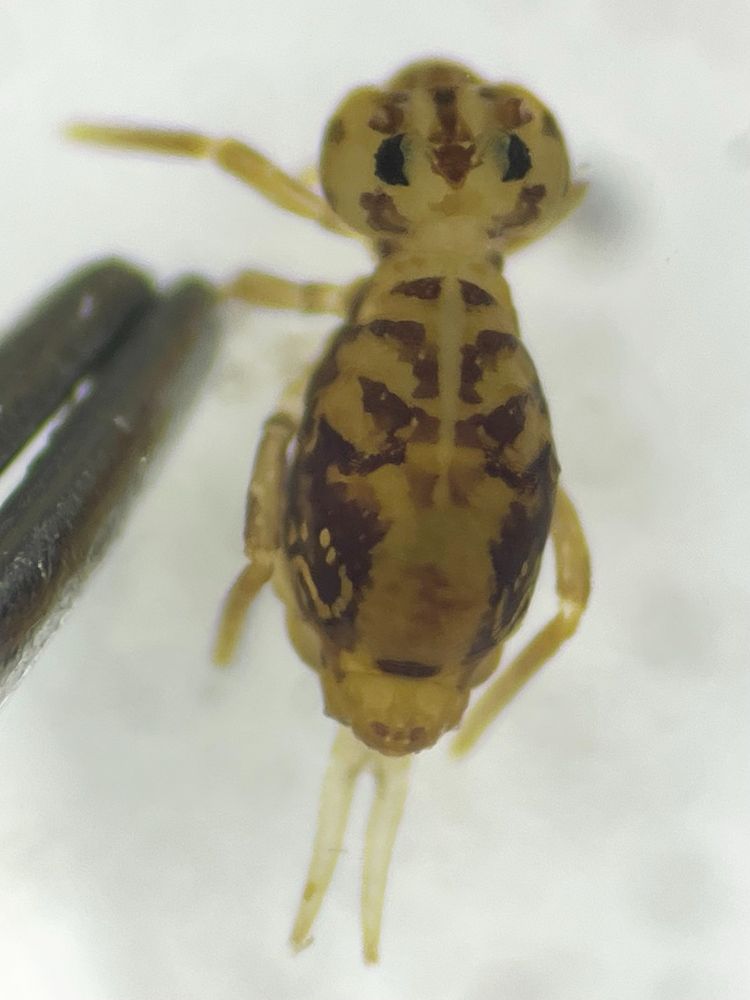
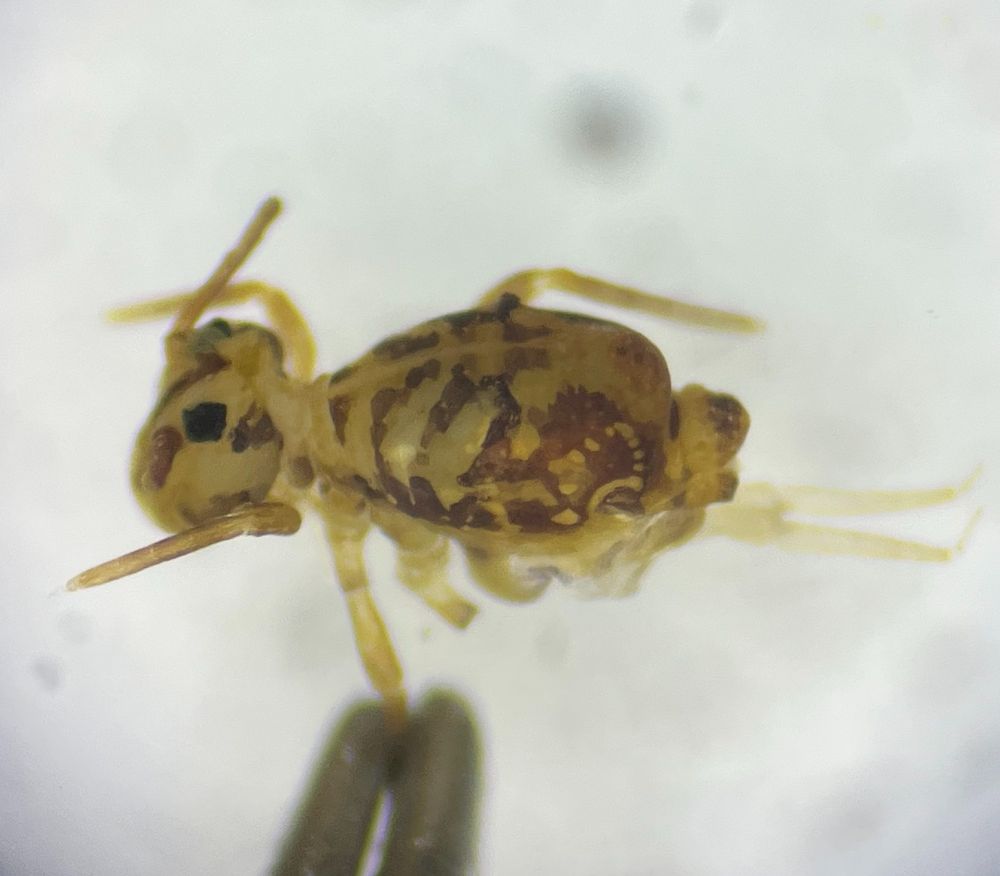
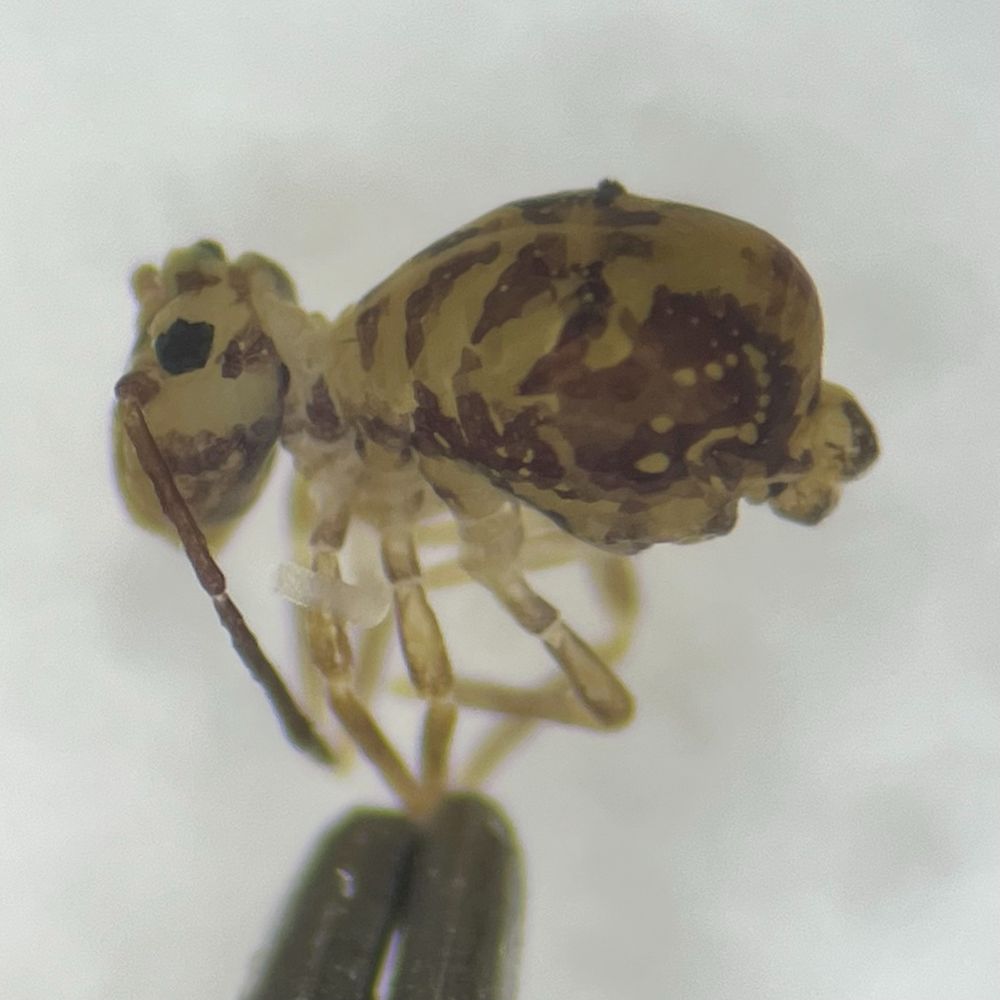
April 13, 2025 at 5:54 PM
New to Britain! These springtails are Dicyrtomina signata, a European species that's never previously been seen in the UK. I found these while out and about in Wanstead Park, London (with @josscarr.bsky.social, @nmaybury4.bsky.social).
One to look out for!
One to look out for!
In 1924, Womersley referred to Orchesella flavescens as "the most magnificent spring-tail". Today, 101 years later, the first reference genome for this species has been assembled and published, from a specimen I collected at Wytham Woods!
wellcomeopenresearch.org/articles/10-...
wellcomeopenresearch.org/articles/10-...

March 18, 2025 at 1:27 PM
In 1924, Womersley referred to Orchesella flavescens as "the most magnificent spring-tail". Today, 101 years later, the first reference genome for this species has been assembled and published, from a specimen I collected at Wytham Woods!
wellcomeopenresearch.org/articles/10-...
wellcomeopenresearch.org/articles/10-...
Let’s see if we can give it a name before too long!

February 28, 2025 at 4:52 PM
Let’s see if we can give it a name before too long!
A rainy afternoon looking for Smews near St Ives (Cambs) was sadly smewless. But this was somewhat compensated by us (specifically @joeparham19.bsky.social) finding this first-winter drake Lesser Scaup (right). A vagrant from North America and a new sp. for me!
+ some drake goldeneyes! 🪶
+ some drake goldeneyes! 🪶



January 26, 2025 at 8:13 PM
A rainy afternoon looking for Smews near St Ives (Cambs) was sadly smewless. But this was somewhat compensated by us (specifically @joeparham19.bsky.social) finding this first-winter drake Lesser Scaup (right). A vagrant from North America and a new sp. for me!
+ some drake goldeneyes! 🪶
+ some drake goldeneyes! 🪶
Send me records: I am excited to be taking on the role of national springtail recorder. I have huge shoes to fill, but I hope to continue the progress Peter Shaw made in understanding the taxonomy and biology of the UK's #springtails.
www.brc.ac.uk/scheme/colle...
www.brc.ac.uk/scheme/colle...

January 21, 2025 at 11:45 AM
Send me records: I am excited to be taking on the role of national springtail recorder. I have huge shoes to fill, but I hope to continue the progress Peter Shaw made in understanding the taxonomy and biology of the UK's #springtails.
www.brc.ac.uk/scheme/colle...
www.brc.ac.uk/scheme/colle...
Today was a day for skulking reedbed birds: two Bitterns and three Water Rails at @wwtworldwide.bsky.social's London Wetland Centre in the winter sun ☀️🪶



January 11, 2025 at 6:07 PM
Today was a day for skulking reedbed birds: two Bitterns and three Water Rails at @wwtworldwide.bsky.social's London Wetland Centre in the winter sun ☀️🪶
This may look like an amorphous blob, but it’s an exciting one (and new for me)! This is the <1mm springtail Neelus murinus. The second photo gives a sense of scale in comparison to my gloved finger.
Let’s hope we can sequence its genome, and reveal what secrets it’s hiding #springtails
Let’s hope we can sequence its genome, and reveal what secrets it’s hiding #springtails


January 8, 2025 at 4:50 PM
This may look like an amorphous blob, but it’s an exciting one (and new for me)! This is the <1mm springtail Neelus murinus. The second photo gives a sense of scale in comparison to my gloved finger.
Let’s hope we can sequence its genome, and reveal what secrets it’s hiding #springtails
Let’s hope we can sequence its genome, and reveal what secrets it’s hiding #springtails
Feeling lucky to have been able to watch this drake Goosander expertly fishing in the rapids of the River Mersey in Manchester yesterday 🪶
The last one I saw was on the pond at the Sanger Institute last month… a little lost!
The last one I saw was on the pond at the Sanger Institute last month… a little lost!



December 31, 2024 at 9:58 AM
Feeling lucky to have been able to watch this drake Goosander expertly fishing in the rapids of the River Mersey in Manchester yesterday 🪶
The last one I saw was on the pond at the Sanger Institute last month… a little lost!
The last one I saw was on the pond at the Sanger Institute last month… a little lost!
A lifer for me in Austria! It has been a joy watching a flock of c50 Alpine Choughs coming to drink meltwater from the gutters of neighbouring buildings each morning. Apparently this species holds the record for breeding at the highest altitude! 🪶


December 29, 2024 at 9:42 AM
A lifer for me in Austria! It has been a joy watching a flock of c50 Alpine Choughs coming to drink meltwater from the gutters of neighbouring buildings each morning. Apparently this species holds the record for breeding at the highest altitude! 🪶
It may have been -12°C with a foot of snow on the ground in Seefeld, Austria, but that didn't seem to be an issue for this Western Conifer Seed Bug (Leptoglossus occidentalis)...
They often hibernate indoors, but this one seemed satisfied with the outside wall!
They often hibernate indoors, but this one seemed satisfied with the outside wall!


December 26, 2024 at 3:23 PM
It may have been -12°C with a foot of snow on the ground in Seefeld, Austria, but that didn't seem to be an issue for this Western Conifer Seed Bug (Leptoglossus occidentalis)...
They often hibernate indoors, but this one seemed satisfied with the outside wall!
They often hibernate indoors, but this one seemed satisfied with the outside wall!
An adorable fly from South Africa this past summer - a species of Atriadops, in the family Nemestrinidae (which has no representatives in the U.K.).
Despite its cute appearance, its larvae are endoparasitoids of grasshoppers and praying mantises!
Despite its cute appearance, its larvae are endoparasitoids of grasshoppers and praying mantises!


November 24, 2024 at 4:44 PM
An adorable fly from South Africa this past summer - a species of Atriadops, in the family Nemestrinidae (which has no representatives in the U.K.).
Despite its cute appearance, its larvae are endoparasitoids of grasshoppers and praying mantises!
Despite its cute appearance, its larvae are endoparasitoids of grasshoppers and praying mantises!
Having long lost the motivation to post on Twitter, I have quite the backlog of photos to share!
Top of my list is this comical shot of a pair of Iberian Azure-winged Magpies curious as to what’s unfolding in front of them 🪶
Top of my list is this comical shot of a pair of Iberian Azure-winged Magpies curious as to what’s unfolding in front of them 🪶

November 19, 2024 at 5:21 PM
Having long lost the motivation to post on Twitter, I have quite the backlog of photos to share!
Top of my list is this comical shot of a pair of Iberian Azure-winged Magpies curious as to what’s unfolding in front of them 🪶
Top of my list is this comical shot of a pair of Iberian Azure-winged Magpies curious as to what’s unfolding in front of them 🪶
A nippy November day and face-to-face views of two beautiful Black-necked Grebes at Walthamstow Wetlands this morning 🌅 #londonbirds



November 17, 2024 at 2:10 PM
A nippy November day and face-to-face views of two beautiful Black-necked Grebes at Walthamstow Wetlands this morning 🌅 #londonbirds

